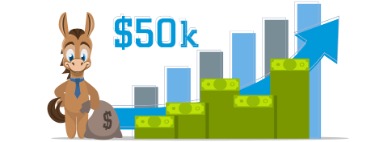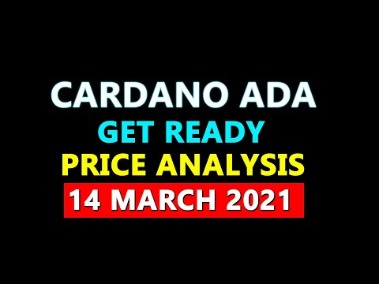Contents

Conversely, if the closing price is above the middle of the candle, it is bullish, as the formation resembles a bullish pin bar pattern. The dragonfly doji pattern doesn’t occur frequently, but when it does it is a warning sign that the trend may change direction. Following a price advance, the dragonfly’s long lower shadow shows that sellers were able to take control for at least part of the period. While the price ended up closing unchanged, the increase in selling pressure during the period is a warning sign.
If we spot a doji on one of the Fibonacci levels, then it’s a stronger sign that the countertrend may be over. To help ensure that the trend you’re hoping for has actually kicked off, wait for a couple of periods before opening a position. If the next two candlesticks show strong movement in the right direction, it’s more likely that a new trend has formed. Doji don’t always mean a reversal is on the way, however. Say that we spotted a gravestone doji on our bear run instead.
By definition this type of candlestick pattern is formed when the opening and closing price trends for underlying assets are essentially equal, but also occur at the daily low end. The Doji candlestick pattern is a candlestick that has a small body and long shadows. It reflects market uncertainties and barely provides signals of a market reversal. The open and close prices are close to each other and the high price. Thus, the upper part of the candlestick is small and barely has the upper shadow.
What is a Hammer Candlestick Pattern?
In a bullish doji star, a long red candle appears at the end of a bear run, followed by a doji. Then, at the end of the pattern, a long green stick shows the beginning of a new upward move. Essentially, the doji shows the moment of indecision as the sellers start to lose out to buyers – but it’s the candles on either side that give context to the move. Our final trade example shows two doji forex patterns that appeared at a 78.6% Fibonacci retracement level, right before a corrective phase ended. Here too, the MACD indicator showed clear momentum divergence before the price reversed higher.
There’s another indecisive https://forex-trend.net/, a Spinning Top candlestick. Although both look similar, the Spinning Top candle has a bigger body and long shadows. In comparison, the Doji candlestick can have different-sized shadows. If you look at the daily chart of the EUR/USD pair, you’ll see many Doji candlesticks formed in different market trends. A bullish market for a currency pair occurs when its exchange rate is rising overall and forming higher highs and lows. On the other hand, a bearish market is characterised by a generally falling exchange rate through lower highs and lows.
It has not been prepared in accordance with legal requirements designed to promote the independence of investment research and as such is considered to be a marketing communication. Although we are not specifically constrained from dealing ahead of our recommendations we do not seek to take advantage of them before they are provided to our clients. The long-legged doji suggests that the forces of supply and demand are nearing equilibrium and that a trend reversal may occur. This is because equilibrium or indecision means that the price is no longer pushing in the direction it once was. While a single doji is a candlestick pattern in itself, it’s worth noting that dojis are also part of many multi-candlestick patterns.
The morning https://topforexnews.org/ star is a three-candlestick pattern that works in a strong downtrend. If, after a long bearish candle, there is a gap down and a formation of the Doji candlestick, it’s a signal of possible reversal up. In order to confirm this, the third candle should be bullish and open with a gap up covering the previous gap down. Following a downtrend, the dragonfly candlestick may signal a price rise is forthcoming. Following an uptrend, it shows more selling is entering the market and a price decline could follow.

These candlesticks may indicate a bullish or bearish trend reversal. Traders should interpret doji candlestick patterns cautiously and look for confirmation in trading volume, price action, and other technical indicators before acting on them. The dragonfly doji is a candlestick pattern stock that traders analyze as a signal that a potential reversal in a security’s price is about to occur. Depending on past price action, this reversal could be to the downside or the upside. The dragonfly doji forms when the stock’s open, close, and high prices are equal. It’s not a common occurrence, nor is it a reliable signal that a price reversal will soon happen.
Warrior Trading Blog
BlackBull Markets is a reliable and well-respected trading platform that provides its customers with high-quality access to a wide range of asset groups. The broker is headquartered in New Zealand which explains why it has flown under the radar for a few years but it is a great broker that is now building a global following. The BlackBull Markets site is intuitive and easy to use, making it an ideal choice for beginners.

A chart depicting a doji suggests that no clear direction has been established for this security – it is a sign of indecision, or uncertainty in future prices. The harami pattern is another signal in the market that is used in conjunction with the doji to identify a bullish or bearish turn away from indecision. A doji formation generally can be interpreted as a sign of indecision, meaning neither bulls nor bears can successfully take over.
What Is the Doji Pattern, and How Does It Work?
As with other candlestick patterns, this started being used in Japan in the 17th century . While these patterns are essential, you need to realize that they are never accurate. But, at times it can happen, and then the original trend continues. Dojis are good for reversals because they present indecision, uncertainty, or vacillation by buyers in an uptrend and sellers in a downtrend. We can easily realize this by looking at the length of the candle shadow. Steve Nison, is one of the best-known writers on candlestick patterns.
- A dragonfly doji has a long upper wick and little to no lower wick.
- The creation of the doji pattern illustrates why the doji represents such indecision.
- This material is not intended for distribution to, or use by, any person in any country or jurisdiction where such distribution or use would be contrary to local law or regulation.
- The range of results in these three studies exemplify the challenge of determining a definitive success rate for day traders.
- Then, it reverses with a long red stick which kicks off a new downtrend.
- The dragonfly doji pattern also can be a sign of indecision in the marketplace.
https://en.forexbrokerslist.site/s appear too often in shorter timeframes, and one can’t take them as serious signals for a particular price movement. Besides, short-term timeframes feature a lot of price noise, confusing traders. A doji candle chart occurs when the opening and closing prices for a security are just about identical. If this price is close to the low it is known as a “gravestone,” close to the high a “dragonfly”, and toward the middle a “long-legged” doji. The name doji comes from the Japanese word meaning “the same thing” since both the open and close are the same.
This can be a sign that an uptrend is coming to an end, or perhaps that a downtrend is set to continue. After all, it looks the sellers ended the session in control. To get started trading doji candlesticks, open an account.
A dragonfly doji with high volume is generally more reliable than a relatively low volume one. Ideally, the confirmation candle also has a strong price move and strong volume. A Dragonfly Doji is a type of candlestick pattern that can signal a potential reversal in price to the downside or upside, depending on past price action.
In certain contexts, a doji candlestick could indicate that the price is near a topping or bottoming point. At other times, it means that the price may move sideways. Where the doji occurs in a trend is key to its interpretation. For example, a dragonfly doji looks like a T, a gravestone doji looks like an inverted dragonfly, a long-legged doji has long upper or/and lower shadows.
Doji After a Downtrend
If it forms a doji during an uptrend, it is a bearish and vice versa. A Doji candle pattern is generally seen as a sign of indecision in the market, as there is no clear direction being taken by buyers or sellers. We’ve aligned two signals two create this opportunity, but it’s still a good idea to wait for confirmation before we open the position. In this case, we could see if the next session takes the form of a green candlestick, which could be the resumption of the original bull trend. After all, if your chosen market is breaking through significant levels in the opposite direction to your predicted price action, chances are your trade has failed. How you trade a doji depends on the signal your pattern is generating.
These additional methods can greatly help a trader in identifying the doji candlesticks that might lead to the highest probability reversals. Spread bets and CFDs are complex instruments and come with a high risk of losing money rapidly due to leverage. 78% of retail investor accounts lose money when spread betting and/or trading CFDs with this provider.
